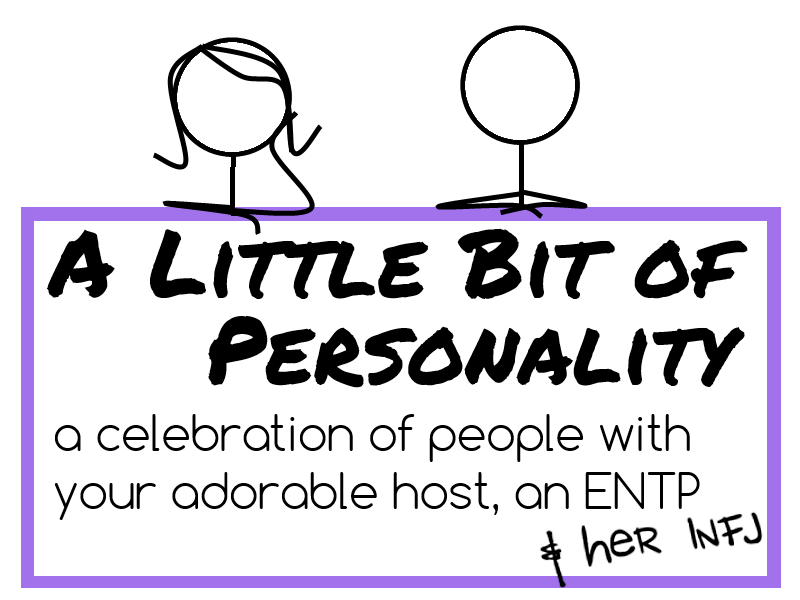Update – April 2, 2015: I’m adding a needed disclaimer that this article was posted for April Fools’ Day, 2015. It is an intended parody of the all-too-common pseudoscience found in the field of personality typing. Though I worked hard to make it dry, I honestly thought everyone would be able to tell it was a joke by how over the top it was, but I think it drives my point home that much harder that *many* people took it seriously. These are attitudes found throughout psychology. They’re dangerous, horrendously abusive to individuals’ sense of self-worth, let alone blatantly unscientific. I’m sorry if my attempt to roll my eyes came far too close to the truth. (But we really are writing the Modular Personalized Typings and Cognition: The Super Simple Version! That was legit ;)) ~
<3 Calise
Hi everyone! I’m super excited for what I have to share with you today, even though as we’ve been hard at work on the Modular Personalized Typings (which, as with pretty much everything on aLBoP, are turning out way more in-depth, long and detailed than previously expected ;)), and so I only have time to give you a brief intro to Alphanumeric Typing, which is sure to require many posts in the future! As you guys know, here on aLBoP we’re always looking for new ways to understand the human mind, as well as listening to you in order to find new ways to help you understand yourself and everyone around you! Alphanumeric Typing is no different, and I think you’ll appreciate its elegance and simplicity that anyone can understand!
One complaint we hear a lot on aLBoP is that the letters are too confusing. Though we’ve tried to simplify this problem with posts like What Do All These Letters Mean Anyway?, The Cognition Process in Stick Figures and Cognition: The Super Simple Version (that I am currently writing), there are still issues with reading comprehension or complaints of TL;DR (Too long; didn’t read). To help this problem, we (my INFJ and I) have come up with an easy Alphanumeric system since, let’s face it, numbers are easier to understand than letters.
Innovative Alphanumeric System!
Now this part couldn’t be easier; it’s amazing how formulaic the human mind can really be. Each letter has a simple number value, based solely on its position in the English alphabet, so this method is open to anyone who knows the alphabet! Imagine the world opened to kindergarteners and adults alike! In case you hadn’t already guessed, this is based on a straightforward system of A=1, B=2, etc., as follows:
· E = 5
· I = 9
· N = 14
· S = 19
· T = 20
· F = 6
· P = 16
· J = 10
As the order of the alphabet is very important and not at all arbitrary, we can see how this shows the significance and worth of each letter in isolation.
Therefore T (Thinking) is the most valuable personality variable, followed closely by S (Sensing). This should really be a given anyway, as everyone seems to already know those personality traits are more important anyway! 🙂
More surprisingly though, as it is more often taken for granted, is the value of P (Perceiving), as the alphabet clearly states its worth over J (Judging), but perhaps this is an archaic holdover as J was the last letter added to the alphabet, it may have formerly been given more credence than it deserved.
It should be pointed out that in this system, discrepancy of letters accounts for more value than the letter’s value on its own. For example, E (Extraversion) is worth the least at 5, but since its opposite, I (Introversion), is only worth 9, Extraversion is only slightly less worthwhile. However F (Feeling) has the highest discrepancy, with T = 20 being worth 14 more than F = 6. Therefore Feeling is obviously the least valuable personality variable.
Alphanumeric Combinations
When we bring together these combinations of letters, we can now understand the individual types in a way we never could before; by ranking them each numerically!
I thought the types might simply be ranked alphabetically, but the brilliance of this system, with each letter having an individual value, is that it gets rid of the old conventions of left-to-right thinking and takes each letter according to its own merit.
· ISTP = 64
· ESTP = 60
· INTP = 59
· ISTJ = 58
· ENTP = 55
· ESTJ = 54
· INTJ = 53
· ISFP = 50
· ENTJ = 49
· ESFP = 46
· INFP = 45
· ISFJ = 44
· ENFP = 41
· ESFJ = 40
· INFJ = 39
· ENFJ = 35
From this we see that ISTP is the best, but honestly, didn’t we already know that?
As this demonstrates, scientifically, in general terms Feelers are of less worth than Thinkers, with the rare exception of ENTJ, who seems to have gotten the short end of the Thinking gene stick, coming even below one of the Feeling types. But don’t worry, we still need the Feelers for things like taking care of puppies and being walked over like doormats!
On a personal note, I think I should point out that I am okay being the fifth from the top. After all, not everyone can be the best. 😉
I hope this has been a helpful peek at exciting things to come! This is just a glimpse of what typing systems like Alphanumeric Typing can do for you! Oh, and if you’re new to the site, or just reading this after the first of April, you may want to check out Type Specializations:What Makes My Type Special? for a little different look at the value of different people and different types of cognition 🙂
Much love,
<3 Calise



















Recent Comments